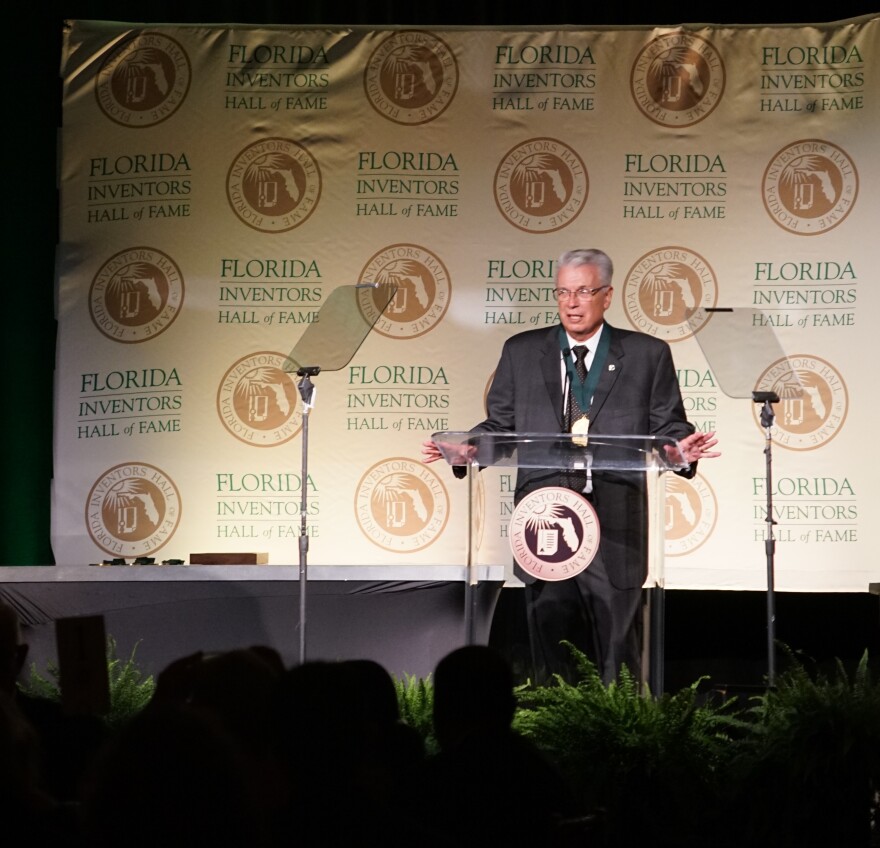When Phillip Furman received his masters degree in microbiology from the University of South Florida in 1972, he didn't realize he was starting on a path that would lead him to developing antiviral drugs that treat diseases like HIV and hepatitis B and C.
He also didn't realize that path would eventually put him in the Florida Inventors Hall of Fame.
"I think there were a lot of things that I gained from my time at USF - I certainly learned more about how to study," said the now retired Furman, 73.
“But more importantly, I got directions from my mentor, Dr. John Betz, on where to go with my career,” Furman said. “It was because of him that I went on to get a PhD and to work with animal viruses, which includes human viruses.”
From USF, Furman earned a PhD at Tulane University before starting a career in the pharmaceutical and biotech industries. He worked at Burroughs Wellcome Company from 1975 until 1995, when the company was acquired by Glaxo.
His research focused on the development of drugs that helped treat herpes viruses and hepatitis B and C.
But it was Furman’s work as the lead scientist of a research team that led to his most important discovery – zidovudine, or AZT, the first antiviral agent approved to treat HIV. In part because of that drug, the disease became one that could be managed long-term.
“It is just so rewarding when we find out the drug has been approved and it actually is helping people to have a better life, to live longer. It’s really a wonderful feeling to have been able to been involved with that,” said Furman.
After Glaxo acquired Wellcome, he struck out on his own, forming Triangle Pharmaceuticals with a pair of colleagues.
“It was quite a transition. It’s very exciting to start with, developing your own company,” Furman said. “There was diversity between the three of us: I was the chief scientific officer, Dr. David Barry was the clinical specialist and he had the business sense along with Nick Ellis, who was a virologist as well.
“So we had kind of a nice group that was necessary to pull this together.”
In 2004, Furman joined Pharmasset as vice president of biological sciences before retiring in 2012.

Furman, who holds 20 U.S. patents, is the first USF alum to be inducted into the Florida Inventors Hall of Fame. The honor puts him along such luminaries as Thomas Edison and Henry Ford – a development that leaves Furman almost speechless.
“It’s absolutely amazing. It has taken me a long for me to really accept this, that I am a part of the Florida Inventors Hall of Fame,” Furman said after the induction ceremony in Tampa Sept. 7. “I was stunned, I was shocked, I never, ever anticipated receiving such an honor.”
As for aspiring inventors and researchers, Furman has some advice: “Believe in yourself, be creative, be open, keep an open mind and learn, constantly learn, because the world is changing.”
Other inductees in the 2018 Florida Inventors Hall of Fame class, who hold a combined 189 U.S. patents, include:
- Sara Blakely, the inventor of the Spanx undergarment
- Dr. Emery N. Brown, whose research has changed the practice of anesthesiology
- Dr. Richard A. Houghten, researcher of drug compound
- Edwin A. Link, inventor of the flight simulator and pioneer in underwater archaeology and submersibles
- Sudipta Seal, nanotechnology researcher
- Dr. Herbert Wertheim, whose ultraviolet light dye absorbers are in most sunglasses produced today
The Florida Inventors Hall of Fame now has two displays at the USF Research Park on the Tampa campus - an outdoor "walk of fame" where visitors can see plaques of the inductees and an exhibit featuring some of their creations and research located inside the USF Galleria. You can see photos of the exhibit in the slideshow above.












